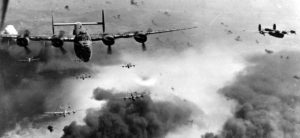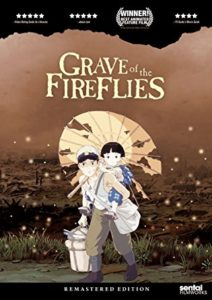In this entry, I will introduce the concept of bias within the study of history and in the study of several other disciplines which include: English Literature, Western Art, and Western Music. I will discuss my own opinion on questions like: Is it right to celebrate a person who has committed a terrible act? or is it proper to assign a misogynist or a racist individual as a role model and source of inspiration? I will also break this into two parts discussing bias in the study of history and then its connection to bias in other disciplines.
A common area of bias in education that most people might be aware of is bias or impartiality in the study of history. It is often the case that bias may hold an exceptionally strong presence in the notation of history; this strong presence means that history may be taught differently in different regions and cultures. The primary motive in the use of bias in the study of history is to control the outlook on the region or culture by those who reside in the region or are a part of that culture. An excellent example of bias in history is the Second World War. This is an area that may be taught differently in history classes of the United States than in history classes of Japan. The purpose is undoubtedly to alter the image of a villain or individual at fault for terrible actions; each nation wants their youth to look up to the nation as one would look up to a hero. In Japan, they may go over the extreme actions and the terrible fire bombings that the United States military committed and omit or alter the crimes or wrong doings of Japan and its military at the time. The same principle can be applied to the United States; US secondary and primary schools purposefully do not go into extreme depth about the bombings on Japan and the effects on civilians, but discuss the atomic bombings that ended a war. This bias in history applies to several events, including the fire bombings on the civilians of Japan by the U.S in 1945 and even the atrocious events of the Sino Japanese war of 1937 (Mariko Oi wrote an extremely enlightening article that will be linked down below).
http://www.bbc.com/news/magazine-21226068
The Sino Japanese war an especially terrible event, which consist of the rape and massacre of Nanjing—this is an event lasting approximately six weeks where the Imperial Japanese Army forces brutally murdered 300,000 soldiers and civilians; this event is also known as the worst atrocity during the World War II era. The summer of 1937 was initiated by an attempt to infiltrate and take Shanghai in China by the Japanese Imperial army; after several months, the Japanese succeeded and 50,000 Japanese soldiers marched toward Nanjing. Unfortunately, even though the Chinese soldiers had a great advantage in their numbers, they were loosely organized and led, which led them to lose the battle at Nanjing after four days of fighting. After their defeat, they engaged in a chaotic retreat and the Japanese soldiers entered the city with orders to kill all of their captives—they participated in many inhumane atrocious activities.
The first concern of the Japanese Imperial army was to eliminate any threat from the 90,000 Chinese soldiers who surrendered and then proceeded to torture, murdering and photographing prisoners of war, raping and murdering the woman and children, and causing an overarching opium and heroin addiction—the events of Nanjing are extremely graphic, so I will not continue describing it in depth (If you want to learn more about the event, I will link a video below this paragraph; viewer discretion is advised). The actions taken by the Imperial Japanese army were extreme and inhumane, yet they are nearly omitted or briefly touched upon in the study of history within the country. The purpose in the omission of this act and acts like it from the history taught in secondary and primary schools in the country is to retain the positive image of the country in the minds of its citizens and youth, as they are the ones that become the foundation of the country.
The same idea can be applied to several disciplines, though not necessarily as gruesome, in their attempt to retain their image and integrity this is not to say. Of course, this is not to argue anything against Japan and its civilians, this was the fault of the previous Imperial Army; there are also several other countries that avoid completely depicting previous terrible acts in order to communicate extremely selective values and moral judgments.
Japan’s Imperial military is not the only group to have partaken in terrible acts at war, the US military also partook in several atrocious events in a time of war, such as the multitude of fire bombings they inflicted on Japan in 1945. While U.S history books do not completely omit the atomic bombings in Japan, they glaze over the many fire bombings that created far more casualties than the Hiroshima and Nagasaki atomic bombings—they skim over the effects on the many Japanese civilian casualties; with the fire bombings of Tokyo, approximately 1 million people died. These bombings also had a terrible impact on the economy of Japan and the lives of those who survived; many people died of malnutrition and disease—the impacts of war are extremely sad, in my own opinion (This may seem off topic, but there is a great animated film that talks about civilian life during war through the events of the fire bombings in Tokyo, called Grave Of The Fireflies produced by Studio Ghibli; it is extremely eye opening and informing). In essence, the United States, similarly to Imperial Japan, and several other countries partake in the use of bias within the study of their history—this especially occurs in the text used for the education of the youth and adolescent.
Ultimately, children are malleable and easier to manipulate because they often cannot conduct their own research into accurate detail within a discipline; though it does become easier to learn about less biased history as one grows older.
The recorders of history and transcribers of the history textbooks that are used to study in primary and secondary school may alter details in history to convey a positive image of the country in which it is taught; they will most likely omit or alter any negative altercations that their country started or partook in, in order to manipulate the opinion of the youth. While, the information given might be factually correct, they may omit certain aspects of knowledge in order to communicate extremely selective values and moral judgments ( Romanowski). In other words, this bias is the result of an attempt to change the perspectives of the youth, so that they will grow and continue to support their country. This bias found in the study of history and its notation is something that all disciplines share fault in.
Bibliography
Editors at History. “Nanking Massacre.” History.com, A&E Television Networks, 9 Nov. 2009, www.history.com/topics/japan/nanjing-massacre.
Hudson, Alex. “Charles Dickens: Six Things He Gave the Modern World.” BBC News, BBC, 15 Dec. 2011, www.bbc.com/news/magazine-16184487.
Nozaki, Yoshiko. War Memory, Nationalism and Education in Postwar Japan: the Japanese History Textbook Controversy and Ienaga Saburo’s Court Challenges. Routledge, 2008.
Romanowski, Michael H. Public Works: The Legacy of the New Deal, Ohio Northern University, www.socialstudies.org/sites/default/files/publications/se/6003/600310.html.
Oi, Mariko. “What Japanese History Lessons Leave Out.” BBC News, BBC, 14 Mar. 2013, www.bbc.com/news/magazine-21226068.


